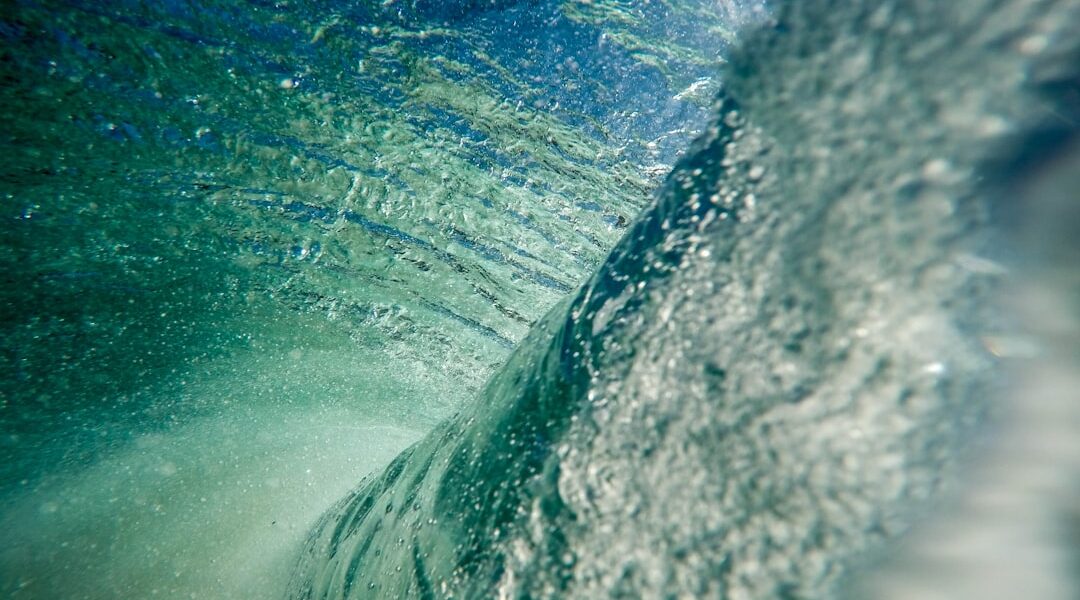When it comes to planning and researching for your aquarium, there are several key factors to consider. First and foremost, you’ll want to decide on the type of aquarium you want to create. Will it be a freshwater or saltwater tank? What size tank are you interested in? These decisions will impact the type of fish and plants you can include in your aquascape.
Next, it’s important to research the specific needs of the fish and plants you’re interested in. Different species have different requirements when it comes to water temperature, pH levels, and tank size. It’s crucial to ensure that the species you choose are compatible with each other and that they can thrive in the environment you create for them.
Additionally, consider the aesthetic you want to achieve with your aquarium. Do you want a natural, heavily planted look, or are you more interested in a minimalist, modern design? Research different aquascaping styles and consider how you can incorporate them into your own tank.
Finally, take the time to research the equipment you’ll need to maintain a healthy aquarium. From filters and lighting to heaters and CO2 systems, there are a variety of tools and technologies that can help you create and maintain your ideal aquascape.
When it comes to planning and researching for your aquarium, there are several key factors to consider. First and foremost, you’ll want to decide on the type of aquarium you want to create. Will it be a freshwater or saltwater tank? What size tank are you interested in? These decisions will impact the type of fish and plants you can include in your aquascape.
Next, it’s important to research the specific needs of the fish and plants you’re interested in. Different species have different requirements when it comes to water temperature, pH levels, and tank size. It’s crucial to ensure that the species you choose are compatible with each other and that they can thrive in the environment you create for them.
Additionally, consider the aesthetic you want to achieve with your aquarium. Do you want a natural, heavily planted look, or are you more interested in a minimalist, modern design? Research different aquascaping styles and consider how you can incorporate them into your own tank.
Finally, take the time to research the equipment you’ll need to maintain a healthy aquarium. From filters and lighting to heaters and CO2 systems, there are a variety of tools and technologies that can help you create and maintain your ideal aquascape.
Key Takeaways
- Planning and Researching:
- Research the types of fish and plants you want to include in your aquarium.
- Consider the size and location of your aquarium before purchasing any equipment.
- Choosing the Right Equipment:
- Invest in a high-quality filter and heater to maintain a healthy environment for your aquatic life.
- Select appropriate lighting and substrate based on the needs of your chosen fish and plants.
- Designing the Aquascape:
- Create a natural-looking environment by arranging rocks, driftwood, and plants in a visually appealing way.
- Consider the needs of your fish and plants when designing the layout of your aquarium.
- Selecting Fish and Invertebrates:
- Choose fish and invertebrates that are compatible with each other and with the size of your aquarium.
- Research the specific needs and behaviors of each species before adding them to your tank.
- Establishing a Maintenance Routine:
- Regularly clean the aquarium and perform water changes to keep the environment healthy for your aquatic life.
- Monitor the equipment and make any necessary adjustments to maintain optimal conditions.
- Monitoring Water Parameters:
- Test the water regularly for pH, ammonia, nitrite, and nitrate levels to ensure a stable and healthy environment.
- Keep track of any changes in water parameters and take action to address any issues that arise.
- Enjoying and Sharing Your Aquarium:
- Take time to observe and appreciate the beauty of your aquarium and the life within it.
- Share your passion for aquascaping with others and inspire them to create their own beautiful underwater worlds.
Choosing the Right Equipment
Selecting the right equipment for your aquarium is crucial for creating a healthy and thriving environment for your fish and plants. One of the most important pieces of equipment is the filtration system. This helps to remove waste and debris from the water, keeping it clean and oxygenated. There are several types of filtration systems available, including power filters, canister filters, and sponge filters. Consider the size of your tank and the specific needs of your fish when choosing a filtration system.
Another essential piece of equipment is lighting. Different types of plants and fish require different levels of light, so it’s important to choose a lighting system that meets their needs. LED lights are a popular choice for aquariums due to their energy efficiency and customizable settings.
Heating is also an important consideration, especially if you’re keeping tropical fish. A reliable heater will help maintain a consistent water temperature, which is essential for the health of your aquatic inhabitants.
In addition to these key pieces of equipment, you may also need a CO2 system for planted tanks, a water testing kit to monitor water parameters, and a quality substrate to support plant growth. Take the time to research and invest in high-quality equipment to ensure the success of your aquascape.
Selecting the right equipment for your aquarium is crucial for creating a healthy and thriving environment for your fish and plants. One of the most important pieces of equipment is the filtration system. This helps to remove waste and debris from the water, keeping it clean and oxygenated. There are several types of filtration systems available, including power filters, canister filters, and sponge filters. Consider the size of your tank and the specific needs of your fish when choosing a filtration system.
Another essential piece of equipment is lighting. Different types of plants and fish require different levels of light, so it’s important to choose a lighting system that meets their needs. LED lights are a popular choice for aquariums due to their energy efficiency and customizable settings.
Heating is also an important consideration, especially if you’re keeping tropical fish. A reliable heater will help maintain a consistent water temperature, which is essential for the health of your aquatic inhabitants.
In addition to these key pieces of equipment, you may also need a CO2 system for planted tanks, a water testing kit to monitor water parameters, and a quality substrate to support plant growth. Take the time to research and invest in high-quality equipment to ensure the success of your aquascape.
Designing the Aquascape
Designing an aquascape is an art form that requires careful consideration of aesthetics, functionality, and the needs of your aquatic inhabitants. Start by considering the layout of your tank and how you want to arrange your plants, rocks, and other decorations. Think about creating depth and dimension by using different heights and textures throughout the tank.
When selecting plants for your aquascape, consider their growth habits and how they will fill out over time. Choose a variety of species with different leaf shapes and colors to create visual interest. Additionally, consider using hardscape elements such as driftwood or rocks to add structure and natural beauty to your aquascape.
It’s also important to consider the needs of your fish when designing your aquascape. Provide plenty of hiding places and swimming areas for your fish by strategically placing decorations and plants throughout the tank. Research the specific needs of your fish species to ensure that their habitat is suitable for their well-being.
Finally, take into account the maintenance requirements of your aquascape when designing it. Consider how easy it will be to access different areas of the tank for cleaning and maintenance tasks. By carefully planning and designing your aquascape, you can create a beautiful and functional environment for your aquatic friends.
Designing an aquascape is an art form that requires careful consideration of aesthetics, functionality, and the needs of your aquatic inhabitants. Start by considering the layout of your tank and how you want to arrange your plants, rocks, and other decorations. Think about creating depth and dimension by using different heights and textures throughout the tank.
When selecting plants for your aquascape, consider their growth habits and how they will fill out over time. Choose a variety of species with different leaf shapes and colors to create visual interest. Additionally, consider using hardscape elements such as driftwood or rocks to add structure and natural beauty to your aquascape.
It’s also important to consider the needs of your fish when designing your aquascape. Provide plenty of hiding places and swimming areas for your fish by strategically placing decorations and plants throughout the tank. Research the specific needs of your fish species to ensure that their habitat is suitable for their well-being.
Finally, take into account the maintenance requirements of your aquascape when designing it. Consider how easy it will be to access different areas of the tank for cleaning and maintenance tasks. By carefully planning and designing your aquascape, you can create a beautiful and functional environment for your aquatic friends.
Selecting Fish and Invertebrates
| Category | Criteria | Metrics |
|---|---|---|
| Fish | Size | Small, Medium, Large |
| Fish | Temperament | Peaceful, Semi-aggressive, Aggressive |
| Invertebrates | Type | Crustaceans, Mollusks, Echinoderms |
| Invertebrates | Compatibility | Reef-safe, Coral-friendly, Aggressive |
Choosing the right fish and invertebrates for your aquarium is essential for creating a balanced ecosystem that thrives over time. Start by researching the specific needs of different species and consider how they will interact with each other in your tank. Some species are more aggressive or territorial than others, so it’s important to choose compatible inhabitants for your aquascape.
Consider the size of your tank when selecting fish and invertebrates. Some species require more space to swim or establish territories than others, so it’s important to choose species that are suitable for the size of your tank.
Additionally, consider the water parameters required by different species. Some fish prefer soft water with a lower pH, while others thrive in harder water with a higher pH. Research the specific needs of each species you’re interested in to ensure that they can coexist harmoniously in your aquarium.
Finally, consider adding some variety to your tank by including different types of fish and invertebrates that occupy different levels of the water column. This will create a more dynamic and visually interesting aquascape while also providing a more natural environment for your aquatic inhabitants.
Choosing the right fish and invertebrates for your aquarium is essential for creating a balanced ecosystem that thrives over time. Start by researching the specific needs of different species and consider how they will interact with each other in your tank. Some species are more aggressive or territorial than others, so it’s important to choose compatible inhabitants for your aquascape.
Consider the size of your tank when selecting fish and invertebrates. Some species require more space to swim or establish territories than others, so it’s important to choose species that are suitable for the size of your tank.
Additionally, consider the water parameters required by different species. Some fish prefer soft water with a lower pH, while others thrive in harder water with a higher pH. Research the specific needs of each species you’re interested in to ensure that they can coexist harmoniously in your aquarium.
Finally, consider adding some variety to your tank by including different types of fish and invertebrates that occupy different levels of the water column. This will create a more dynamic and visually interesting aquascape while also providing a more natural environment for your aquatic inhabitants.
Establishing a Maintenance Routine
Maintaining a healthy aquarium requires establishing a regular maintenance routine that includes tasks such as water changes, filter cleaning, and plant trimming. Start by setting a schedule for these tasks based on the specific needs of your aquarium. For example, some tanks may require weekly water changes while others may only need them monthly.
Regular water testing is also an essential part of maintaining an aquarium. Monitoring water parameters such as pH levels, ammonia levels, nitrate levels, and temperature will help you identify any issues before they become serious problems for your aquatic inhabitants.
In addition to these routine tasks, it’s important to keep an eye on the overall health of your fish and plants. Look out for signs of illness or stress among your aquatic inhabitants and take action as needed to address any issues that arise.
By establishing a regular maintenance routine for your aquarium, you can ensure that it remains a healthy and thriving environment for years to come.
Maintaining a healthy aquarium requires establishing a regular maintenance routine that includes tasks such as water changes, filter cleaning, and plant trimming. Start by setting a schedule for these tasks based on the specific needs of your aquarium. For example, some tanks may require weekly water changes while others may only need them monthly.
Regular water testing is also an essential part of maintaining an aquarium. Monitoring water parameters such as pH levels, ammonia levels, nitrate levels, and temperature will help you identify any issues before they become serious problems for your aquatic inhabitants.
In addition to these routine tasks, it’s important to keep an eye on the overall health of your fish and plants. Look out for signs of illness or stress among your aquatic inhabitants and take action as needed to address any issues that arise.
By establishing a regular maintenance routine for your aquarium, you can ensure that it remains a healthy and thriving environment for years to come.
Monitoring Water Parameters

Monitoring water parameters is crucial for maintaining a healthy aquatic environment in your aquarium. Regular testing for pH levels, ammonia levels, nitrate levels, and temperature will help you identify any issues before they become serious problems for your fish and plants.
Invest in a quality water testing kit that includes all the necessary tests for monitoring these parameters. Test your water regularly according to the specific needs of your aquarium – some tanks may require daily testing while others may only need weekly or monthly testing.
If you notice any irregularities in your water parameters, take action immediately to address them. For example, if ammonia levels are high, perform a water change or adjust your filtration system as needed to improve water quality.
By staying vigilant about monitoring water parameters in your aquarium, you can ensure that it remains a healthy environment for your aquatic inhabitants.
Monitoring water parameters is crucial for maintaining a healthy aquatic environment in your aquarium. Regular testing for pH levels, ammonia levels, nitrate levels, and temperature will help you identify any issues before they become serious problems for your fish and plants.
Invest in a quality water testing kit that includes all the necessary tests for monitoring these parameters. Test your water regularly according to the specific needs of your aquarium – some tanks may require daily testing while others may only need weekly or monthly testing.
If you notice any irregularities in your water parameters, take action immediately to address them. For example, if ammonia levels are high, perform a water change or adjust your filtration system as needed to improve water quality.
By staying vigilant about monitoring water parameters in your aquarium, you can ensure that it remains a healthy environment for your aquatic inhabitants.
Enjoying and Sharing Your Aquarium
After all the hard work you’ve put into planning, researching, designing, selecting fish and invertebrates, establishing a maintenance routine, and monitoring water parameters – it’s time to sit back and enjoy the fruits of your labor! Spend time observing the behavior of your fish as they interact with each other within their carefully crafted habitat.
Share your passion for aquascaping with others by inviting friends or family members over to admire your beautiful aquarium. You can also join online forums or local clubs dedicated to aquarium enthusiasts where you can share tips and advice with fellow hobbyists.
Consider documenting the progress of your aquascape over time through photographs or videos – this will not only allow you to track its growth but also serve as inspiration for others who may be interested in starting their own aquarium journey.
Ultimately, enjoying and sharing your aquarium is one of the most rewarding aspects of this hobby – so take pride in all that you’ve accomplished!
After all the hard work you’ve put into planning, researching, designing, selecting fish and invertebrates, establishing a maintenance routine, and monitoring water parameters – it’s time to sit back and enjoy the fruits of your labor! Spend time observing the behavior of your fish as they interact with each other within their carefully crafted habitat.
Share your passion for aquascaping with others by inviting friends or family members over to admire your beautiful aquarium. You can also join online forums or local clubs dedicated to aquarium enthusiasts where you can share tips and advice with fellow hobbyists.
Consider documenting the progress of your aquascape over time through photographs or videos – this will not only allow you to track its growth but also serve as inspiration for others who may be interested in starting their own aquascape. By capturing the evolution of your aquascape, you can showcase the different stages of development, from the initial setup to the flourishing ecosystem it becomes. Sharing your journey can also help build a community of aquascaping enthusiasts who can exchange ideas, tips, and experiences. Additionally, documenting your aquascape can provide valuable insights into what works well and what doesn’t, helping you learn and improve your skills as an aquascaper. Whether you choose to share your progress online or keep it for personal reference, documenting the growth of your aquascape can be a rewarding and educational experience.
If you’re considering setting up a 125 gallon aquarium, you may want to check out this article on bradgoddard.com that offers tips and advice on how to properly maintain a large aquarium. From choosing the right filtration system to maintaining water quality, this article provides valuable insights for anyone looking to create a thriving aquatic environment for their fish.
FAQs
What are the dimensions of a 125 gallon aquarium?
A standard 125 gallon aquarium typically measures 72 inches in length, 18 inches in width, and 22 inches in height.
What are some common uses for a 125 gallon aquarium?
A 125 gallon aquarium is often used for keeping large freshwater or saltwater fish, as well as for creating elaborate planted or reef tank setups.
What equipment is needed for a 125 gallon aquarium?
Common equipment for a 125 gallon aquarium includes a filtration system, heater, lighting, substrate, decorations, and a sturdy stand to support the weight of the tank.
How much does a 125 gallon aquarium weigh?
When filled with water, substrate, and decorations, a 125 gallon aquarium can weigh over 1400 pounds, so it’s important to place it on a structurally sound and level surface.
What types of fish are suitable for a 125 gallon aquarium?
With its large size, a 125 gallon aquarium can accommodate a wide variety of fish, including cichlids, large freshwater community fish, and a range of saltwater species such as tangs, angelfish, and larger reef fish.
How do you maintain a 125 gallon aquarium?
Maintaining a 125 gallon aquarium involves regular water testing, water changes, filter maintenance, and monitoring the health and behavior of the fish and other inhabitants.




